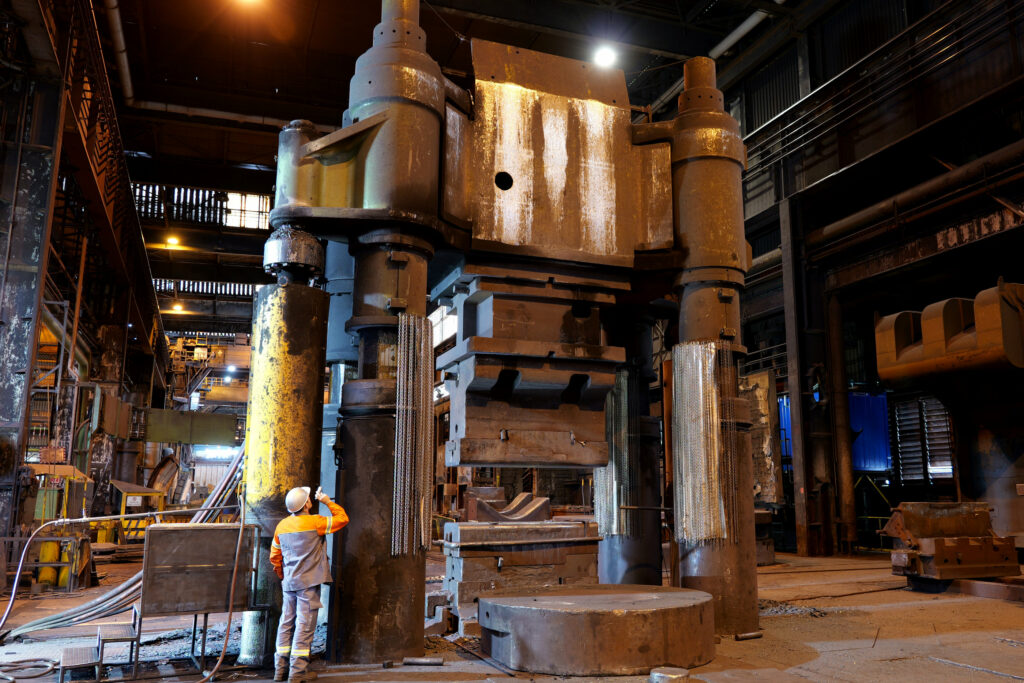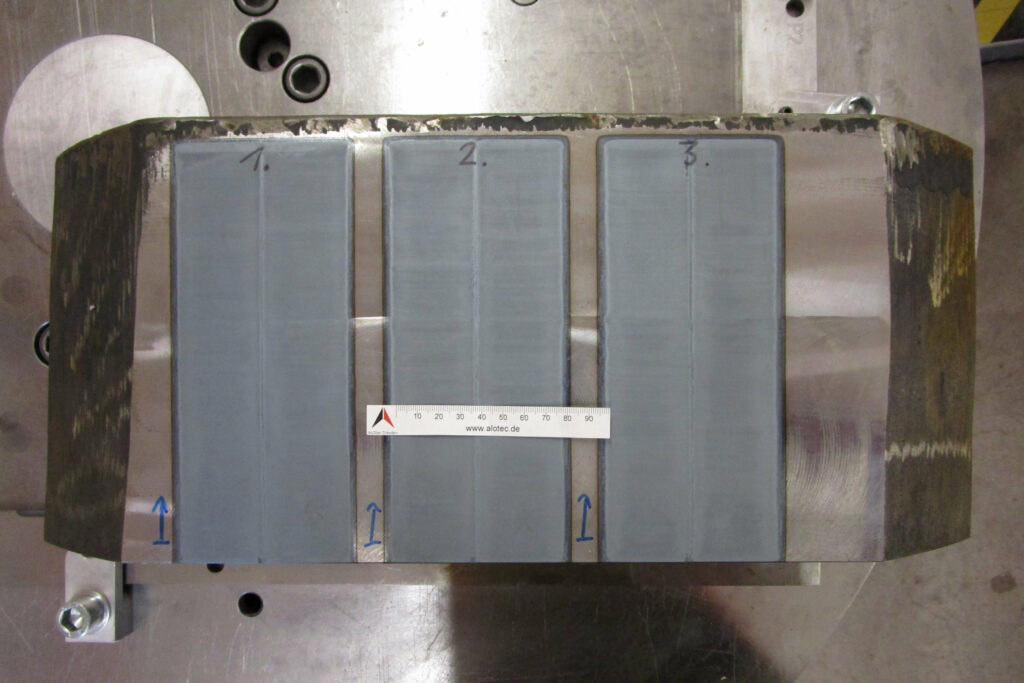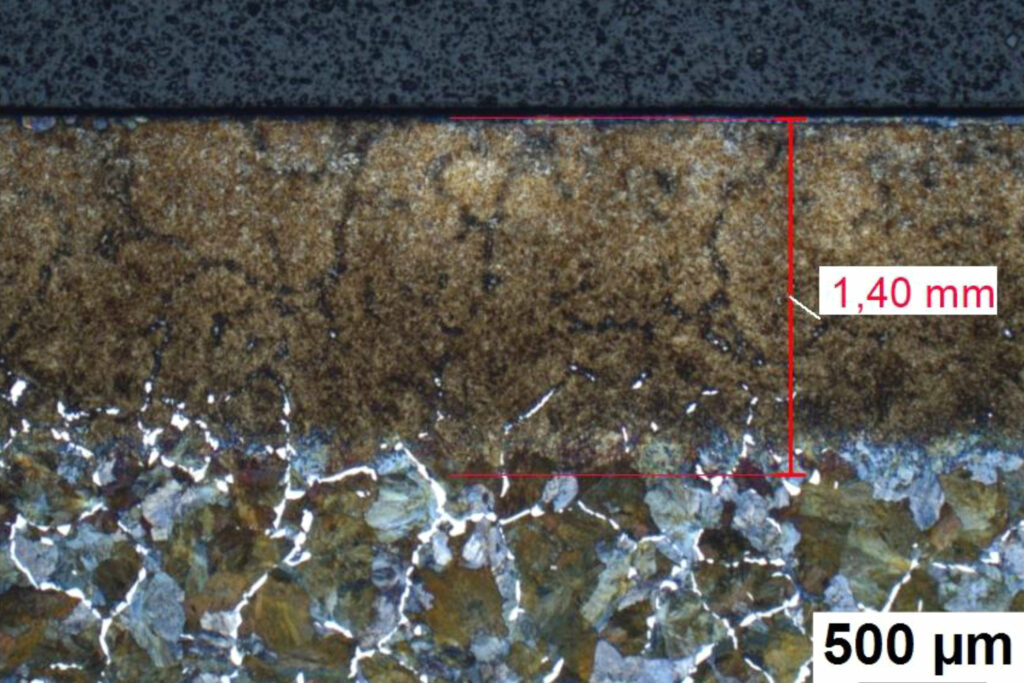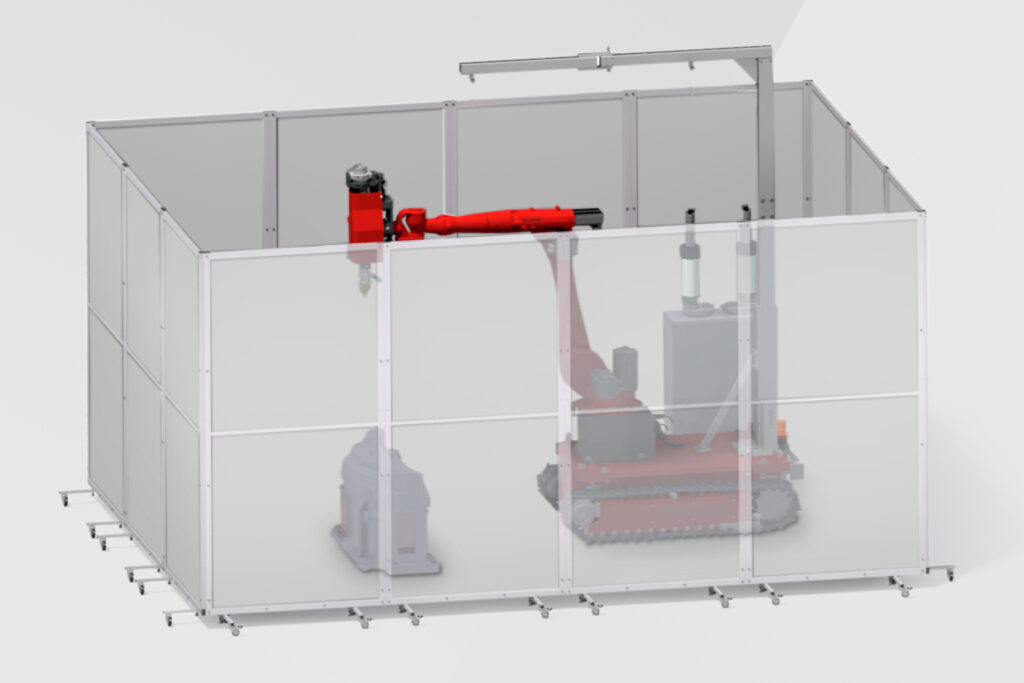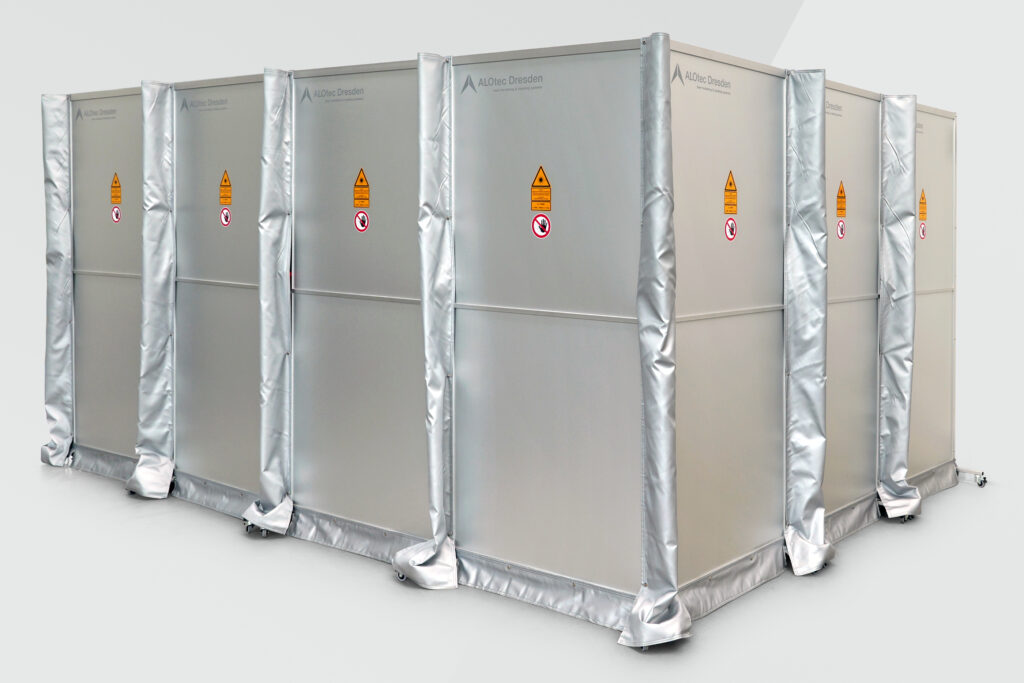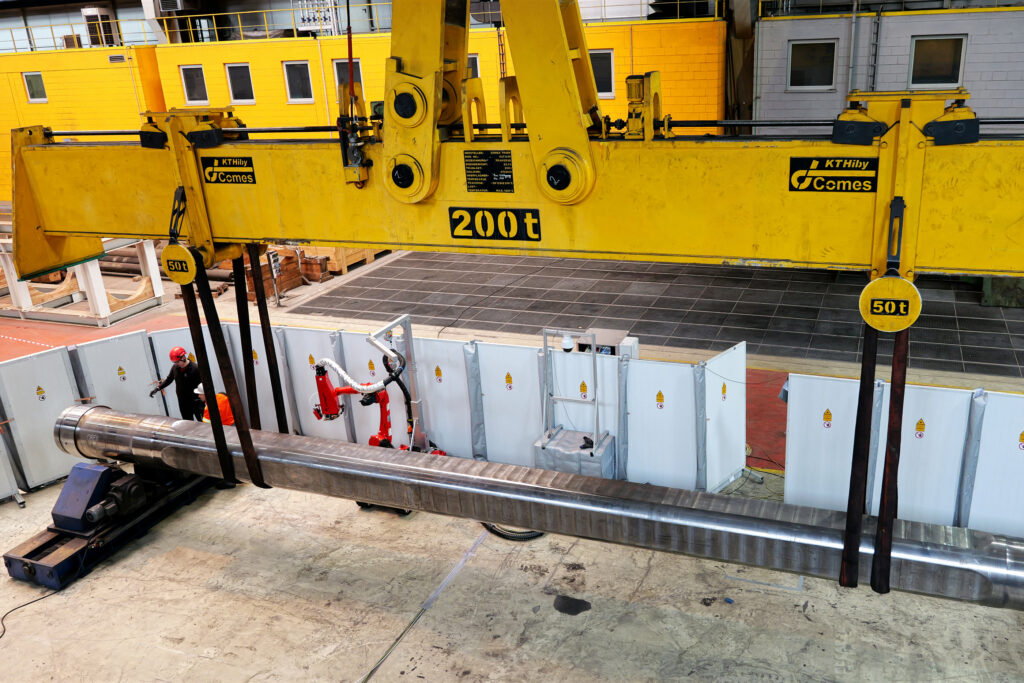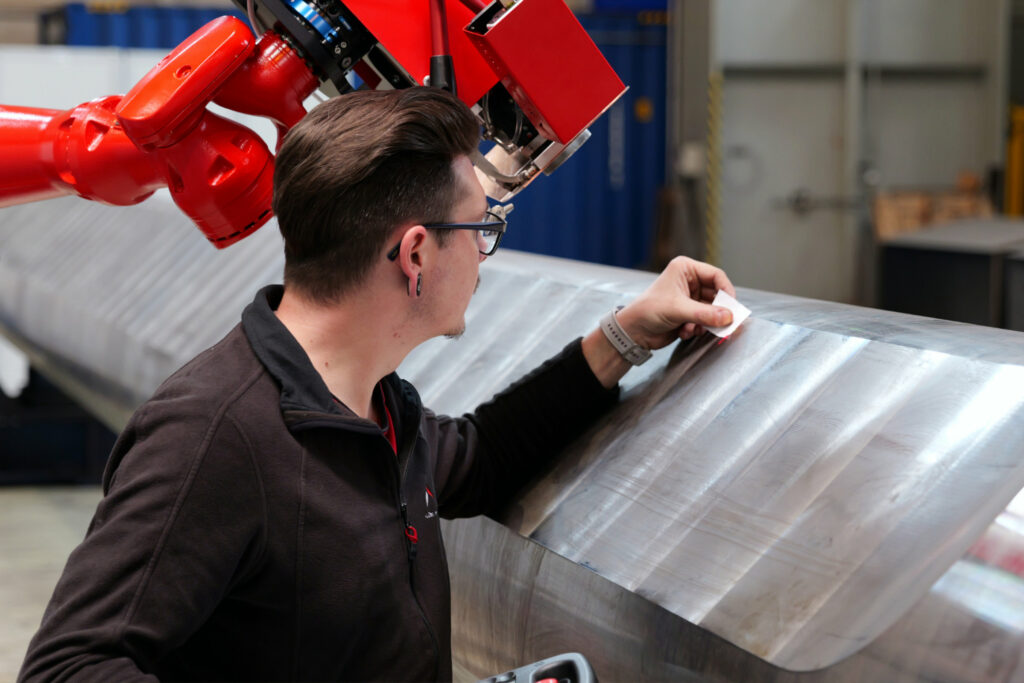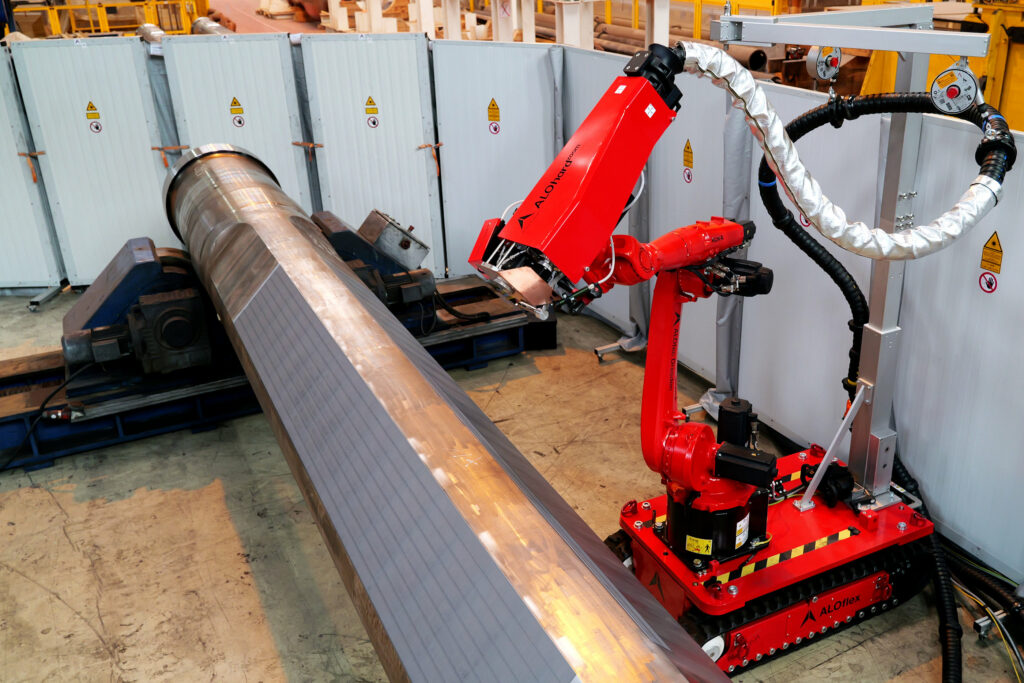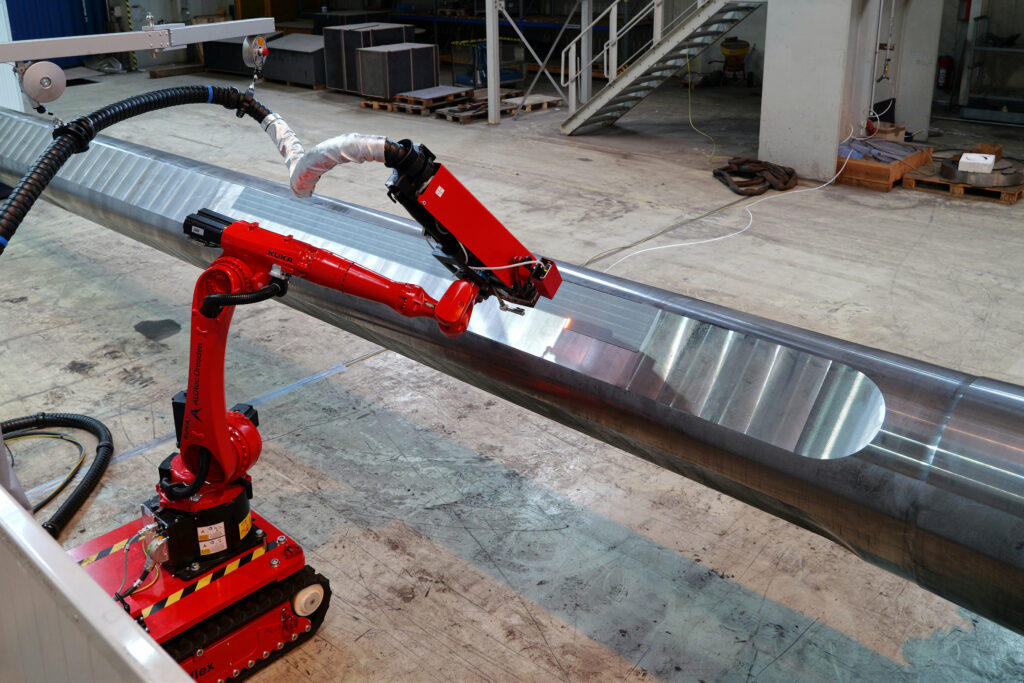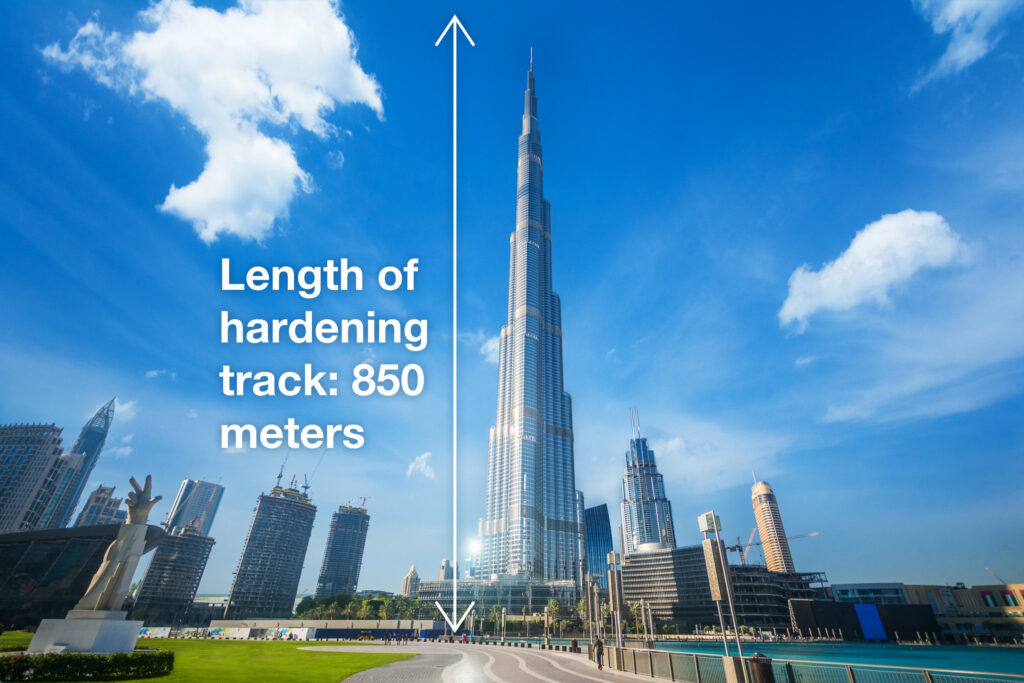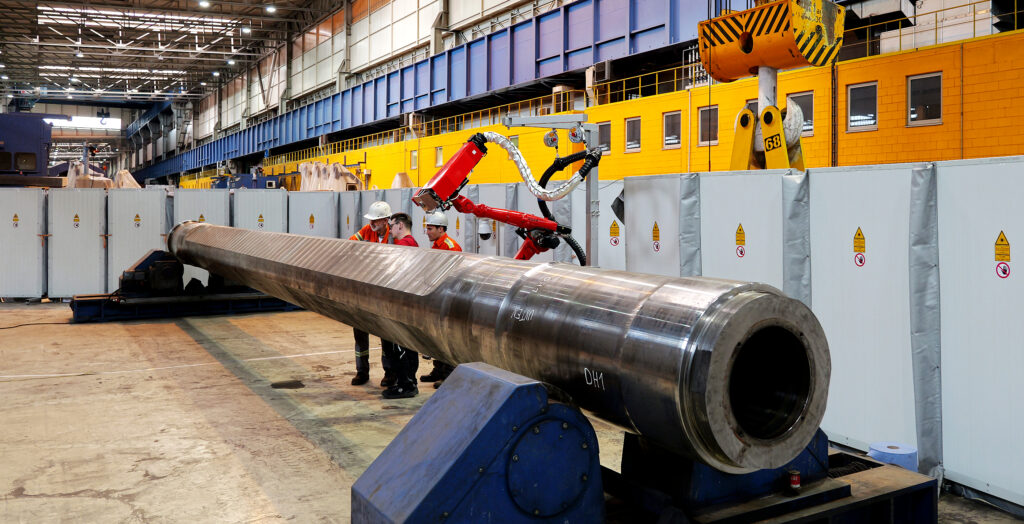
“Mobile laser hardening” application report
Mobile laser hardening of pressure sleeves for an open-die forging press
Our latest challenge: mobile on-site laser hardening of 14-metre-long and 25-ton pressure sleeves that are used in large open-die forging presses and have to withstand extreme loads. By using the latest laser technology, we specifically optimize the wear behaviour of these sleeves and guarantee a longer service life and reduced maintenance intervals.
Introduction
What are open-die forging presses?
Open-die forging presses play a crucial role in heavy industry, especially in the forming of large workpieces where they are exposed to high loads and extreme conditions. In this context, mobile laser hardening of pressure sleeves offers an innovative and effective solution for extending service life and reducing maintenance intervals.
In this case, four pressure sleeves of an 85 MN open-die forging press were hardened on all eight guide surfaces, which enables a longer forging service life and thus a reduction in maintenance and downtimes. These measures are particularly important, as most sites only have one press of this size, which has to work as long and efficiently as possible.
Due to the large dimensions and weight of the pressure sleeves, only on-site processing was possible for economic reasons, which made it necessary to use a mobile laser system.
Comparison of hardening processes
Why laser hardening?
Laser hardening is a process for increasing the surface hardness of metallic components. A high-energy laser beam is directed at the surface of the workpiece, causing rapid and targeted heating of the material. The resulting martensite formation leads to a considerable increase in the hardness and wear resistance of the treated surface.
There are no alternative processes that are comparably economical and efficient:
- Nitriding: Not economical, low hardening depth
- Flame hardening: Low automation capability, poor quality and cooling required
- Induction hardening: Cooling required for quenching
- Oven hardening: Affects the entire component, uneconomical, long process time
In contrast, laser hardening enables targeted and homogeneous hardening of the surfaces without the need for cooling. The targeted application of heat minimizes the thermal distortion of the workpiece.
The first step
Project planning and execution of tests
Request and project planning
The project began with the customer’s request to ALOtec Dresden GmbH. The customer presented the project and sent detailed images and CAD data of the pressure sleeves to be hardened. This data enabled ALOtec to clarify the requirements precisely and prepare a well-founded calculation for the project.
The pressure sleeves to be treated have a length of 14 meters and a weight of 25 tons. Due to these dimensions, it was decided to carry out the laser hardening directly on site at the customer’s premises using the ALOflex mobile laser system. This eliminated the transportation times of the components as well as the associated costs and risks.
Carrying out tests
In order to determine the optimum hardening parameters, we first carried out tests on a comparable sample component made of 42CrMo4 material. The wall thickness of the sample component corresponded to that of the pressure sleeves to be treated. The aim of the tests was to determine the surface hardness and hardening depth.
The evaluation of the tests, such as hardness measurements and microstructure analyses, was carried out by the customer and the results showed a hardening depth of up to 1.4 mm and a surface hardness of approx. 600 HV5 (55 HRC) at a laser feed rate of 4 millimetres per second. The customer was very satisfied with these parameters and the quality of the hardening.
Laser and occupational safety
On-site inspection
After successful trials, an on-site inspection was carried out to discuss the job in detail. All the necessary safety measures for laser use were discussed. The company ALOtec Dresden has a modern laser protection concept “ALOprotect5” especially for mobile applications and the laser safety barriers to be used have been tested by the renowned engineering office Prof. Klaus R. Göbel and certified according to DIN EN 60825-4. They also achieve an unprecedented protective limit irradiation (E86) of 13.8 MW/m² for a passive, mobile laser safety barrier.
Further agreements concerned the connections for the mobile laser system, the provision of a rotary module to turn the pressure sleeves into the correct processing position, the use of a 200-ton indoor crane as well as the planning of the transport routes, the delivery of the system and its components and the safe assembly and dismantling of the laser workstation.
Here we go!
Execution of the order
Preparing the mobile laser system for shipping involved several steps. The mobile laser system consists of a robot on a crawler chassis and a supply unit comprising a laser module, cooler, robot controller, ALOtec controller and an operating station. In addition, laser protection walls are set up over a length of 28 meters and further equipment, such as devices for cleaning the processing surfaces, is provided.
The actual hardening process on site involved the treatment of 30 square meters of surface and hardening tracks with a total length of 850 meters. By way of comparison, the Burj Khalifa in Dubai is currently the tallest building in the world at a height of around 828 meters. The total processing time was around 65 hours, carried out in 2-shift operation. The areas to be hardened were marked in advance by the customer and the robot was programmed and set up online directly on the component on site.
Advantages and results
That’s why laser hardening is worthwhile!
Mobile laser hardening led to a significant increase in the service life of the pressure sleeves, which in turn contributes to higher press productivity. The customer was extremely satisfied with the quality and efficiency of the hardening process, which clearly underlines the benefits of mobile laser hardening in practice.
![]() The advantages of laser hardening:
The advantages of laser hardening:
- Increased wear resistance: The service life of the pressure sleeves is considerably extended.
- Precision: Targeted and efficient hardening exactly where it is needed most.
- Flexibility: Mobile system that can be used directly on site in the forge.
This project is an impressive example of how flexible our ALOflex mobile laser system is.
Is your component too large for transportation?
We will come to you!
The ALOflex mobile laser system is designed for a wide range of applications directly on the component at the customer’s site and can be expanded on a modular basis.
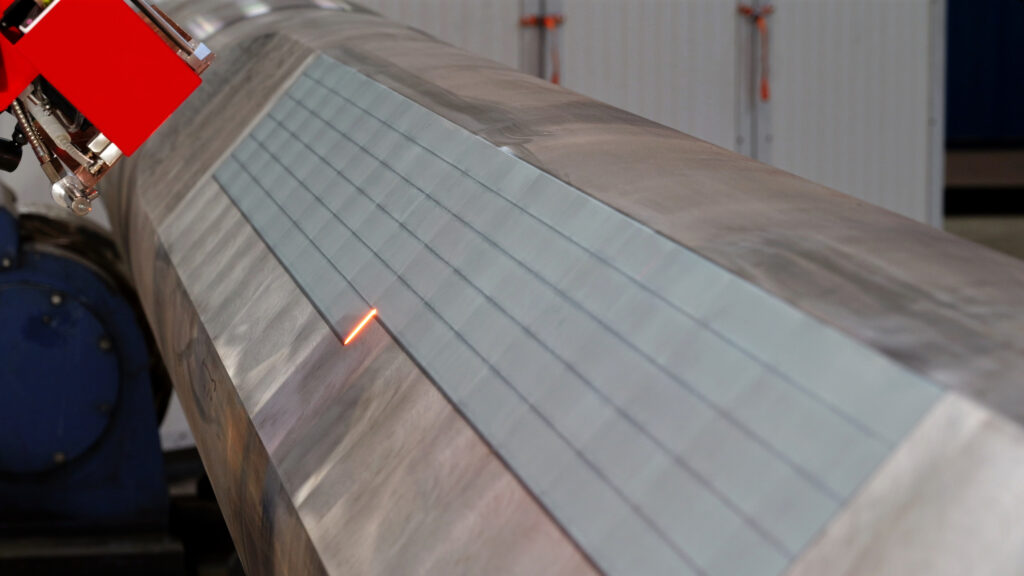
Our laser systems in the moving picture

